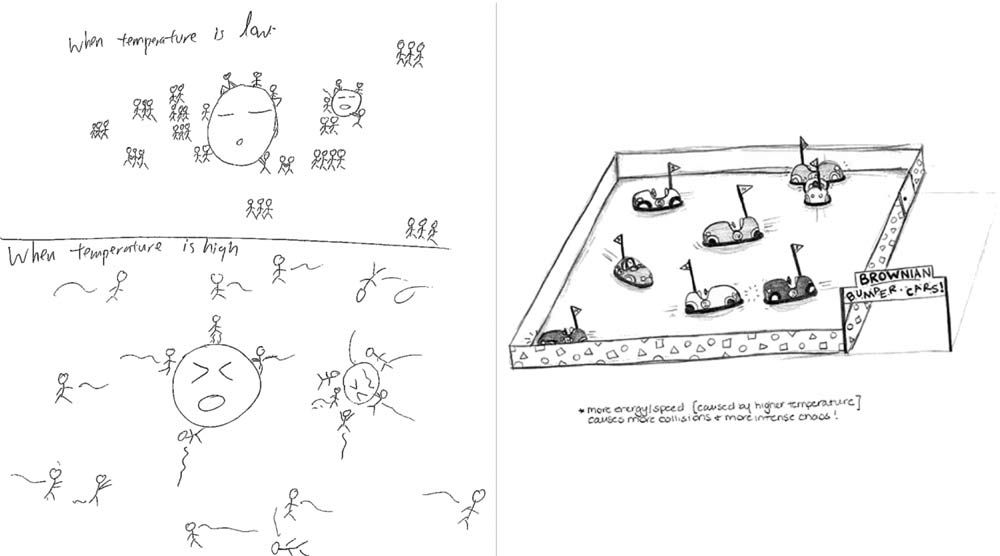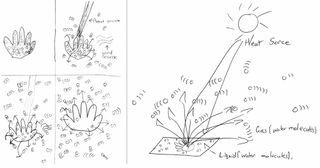Doodling May Draw Students into Science

Science teachers may want to add doodling to their lesson plans, say researchers who found the freehand drawing may help students learn science.
Scientists often rely on visual aids, using drawings, photos, diagrams, videos, graphs and other images not only to explain findings but also to help make discoveries. For instance, ancient Greek mathematicians did not write equations, but rather used diagrams to help arrive at their points.
Emerging research is now hinting that drawing can help students learn and perform science lessons, with a group of scientists, writing in tomorrow's (Aug. 26) issue of the journal Science, suggesting that drawing should be recognized alongside writing, reading and talking as a key element in science education.

For instance, researchers noted that many students are put off by science in school, because the rote learning method in which it is often taught forces them into unpleasant passive roles. Drawing, on the other hand, caters to individual learning differences, and surveys of teachers and students indicated that when students were asked to draw to explore and justify understandings in science, they were more motivated to learn.
"We can have students exercising their creativity and imagination in order to learn the canonical knowledge of science," researcher Russell Tytler, a science educator at Deakin University in Waurn Ponds, Australia, told LiveScience. "There is no need for it to be 'transmitted' to students as dead knowledge." [Read: Are Today's Kids Less Creative & Imaginative]
In addition, classroom research has shown that as students draw a concept such as sound waves to understand it better, they learn to reason creatively in a way distinct from, but complementary to, reasoning through argumentation.
"The most striking thing was the effort that students would apply to learning about science when they read and then drew what they could understand from the text, and how much enjoyment they derived from doing this," researcher Shaaron Ainsworth, a psychologist at the University of Nottingham in England, told LiveScience. "This was in comparison to just reading text, or indeed writing summaries after seeing diagrams or seeing pictures and text. In my experience, learning through drawing is often therefore both effective and enjoyable."
Sign up for the Live Science daily newsletter now
Get the world’s most fascinating discoveries delivered straight to your inbox.

A number of science programs that feature drawing are currently in progress. One example is the Role of Representation in Learning Science project in Australia, where in one task, students put wet hands on paper and were then challenged to represent what happened as the handprint faded using drawings involving particles. Teachers noted students were more engaged in class and performed better in their workbooks. [See doodle examples]
Ainsworth stressed, "No one is saying drawing should replace other modes of representational activity like writing, talking, reading — instead it can complement these activities." If others "think we are proposing drawing as a magic bullet, then I would understand criticisms, but genuinely we are not," she added.
Drawing might be helpful in science "when you need to represent something without ambiguity, when there are visual and spatial aspects to the task, but on other occasions it will still be best to write and talk," Ainsworth said. "Drawing should act in service of learning, so it's important that drawing serves a key function and not become 'a coloring in pretty pictures' activity."
Future research can explore what specific mental mechanisms drawing involves that makes it effective and engaging, under what circumstances drawing is most powerful as a teaching and learning approach, and what role novel technologies such as tablet computers might play. Many questions remain, such as whether one's skill at drawing influences how well you learn by it, and how teachers can use drawing in their classrooms.
Ainsworth, Tytler and colleague Vaughan Prain were the researchers who detailed their findings in the most recent issue of the journal Science.
Follow LiveScience for the latest in science news and discoveries on Twitter @livescience and on Facebook.












